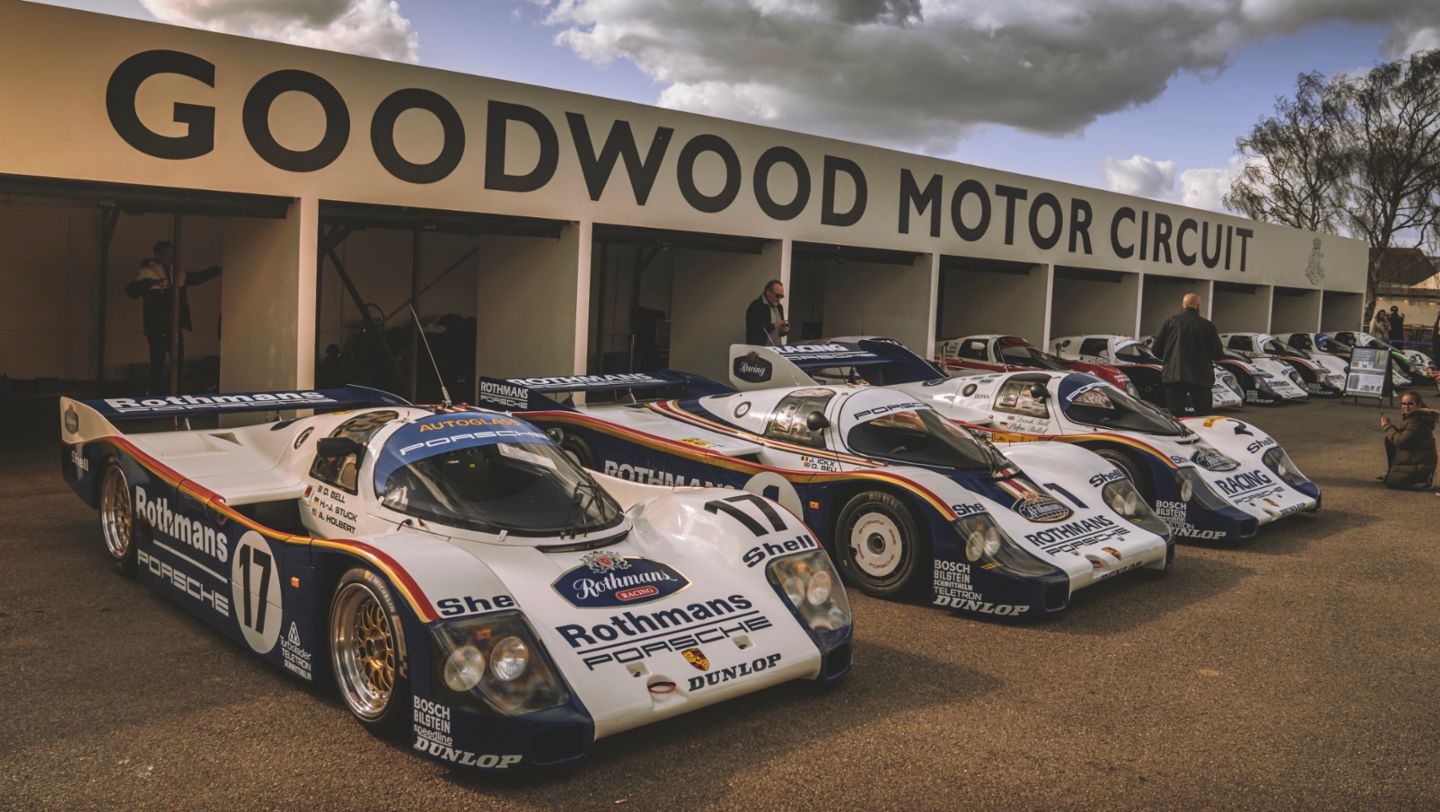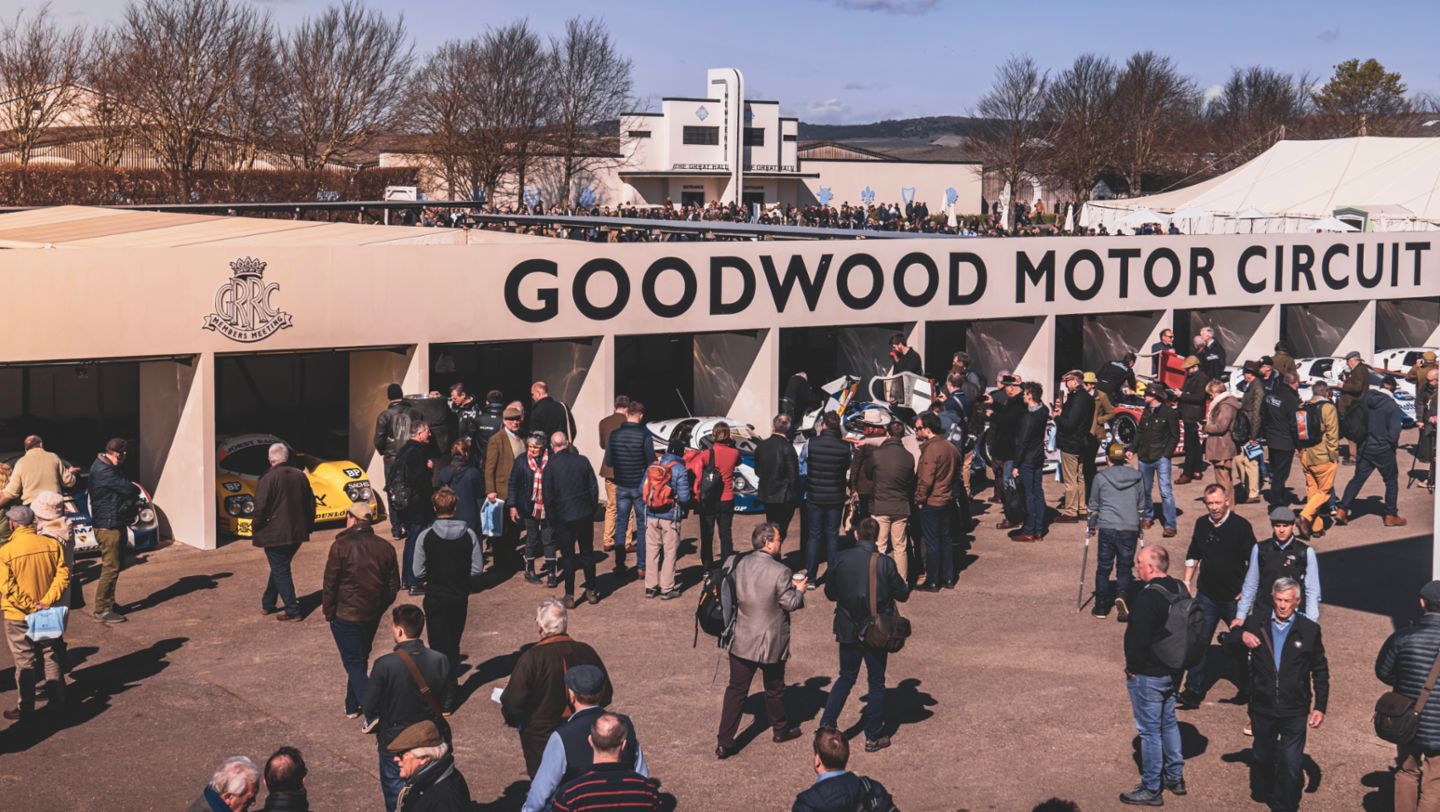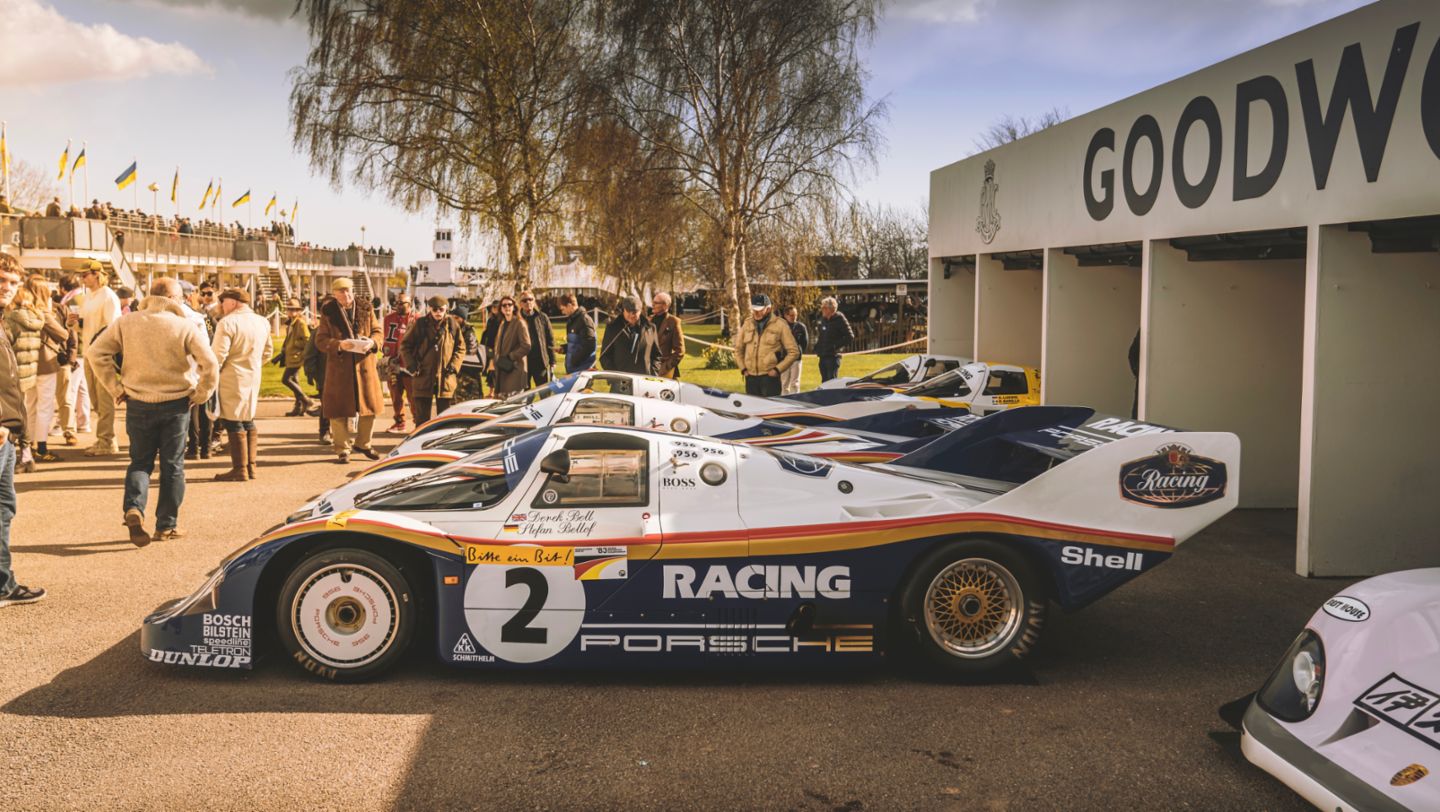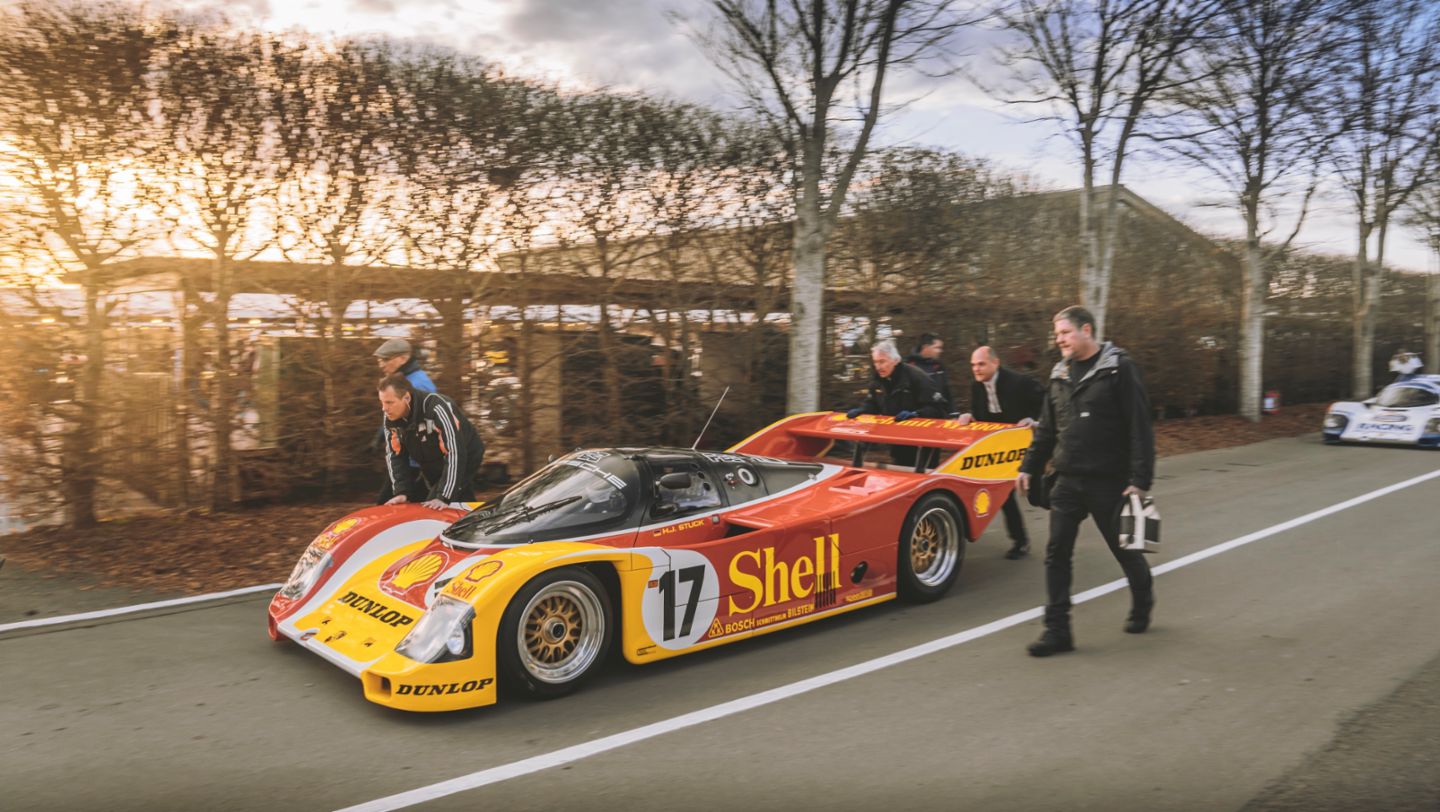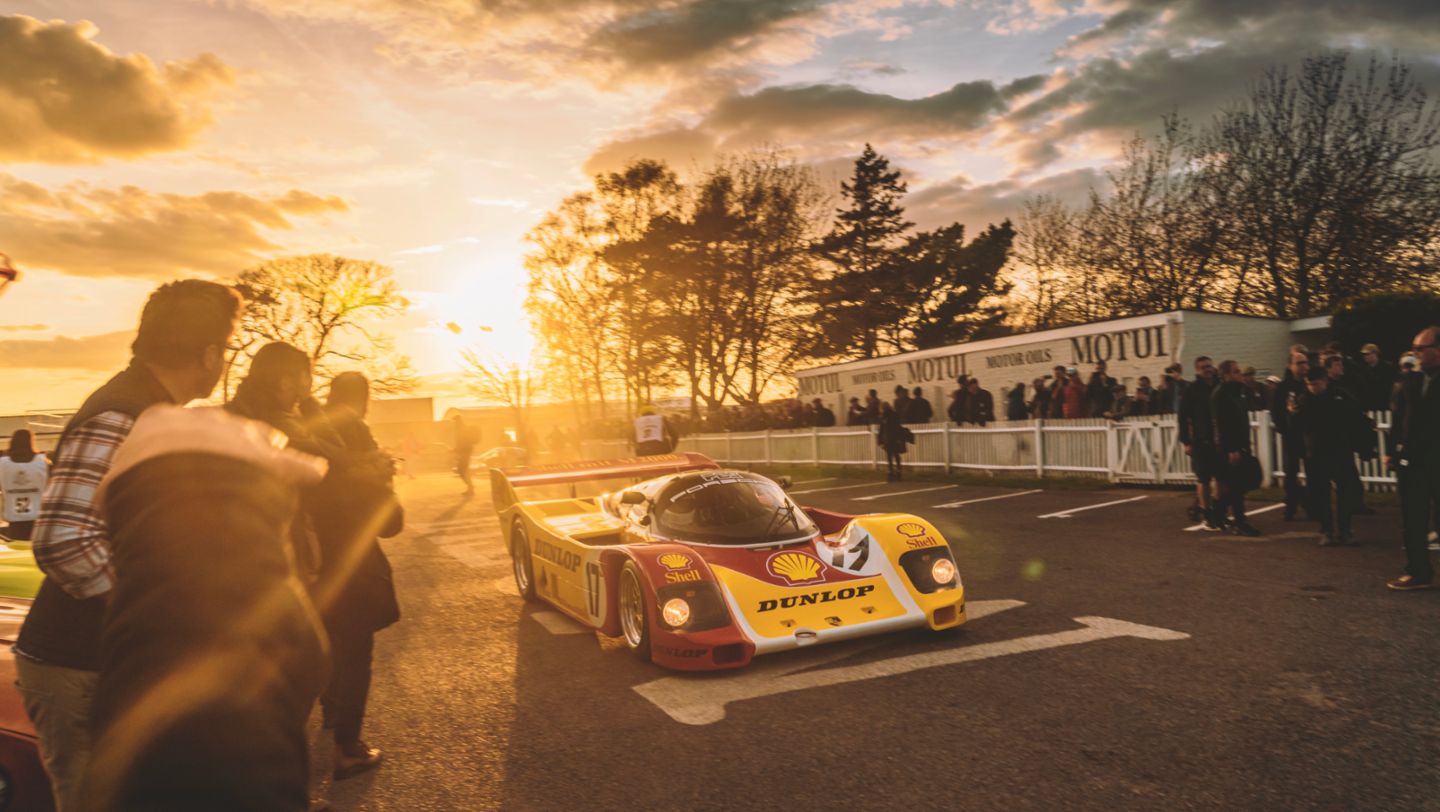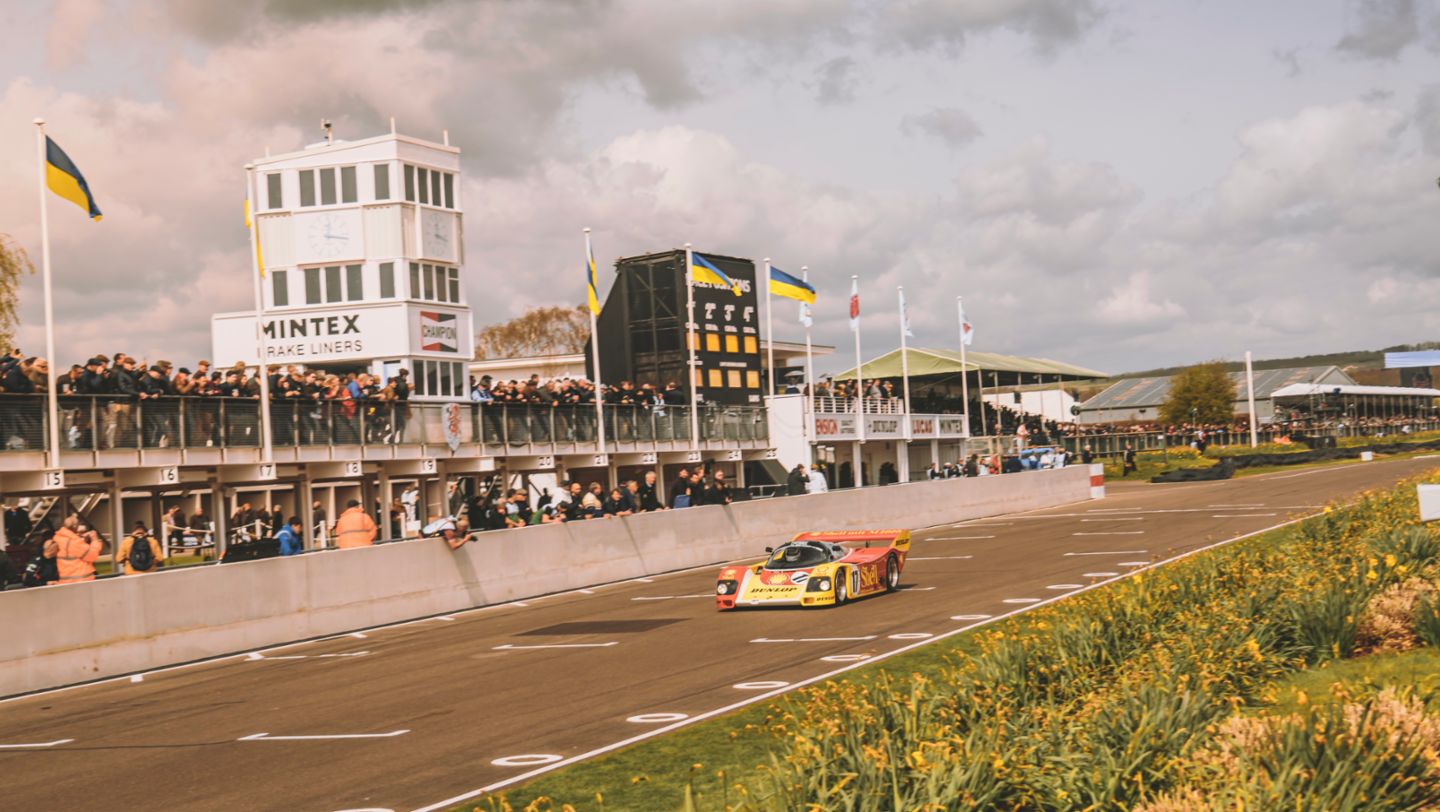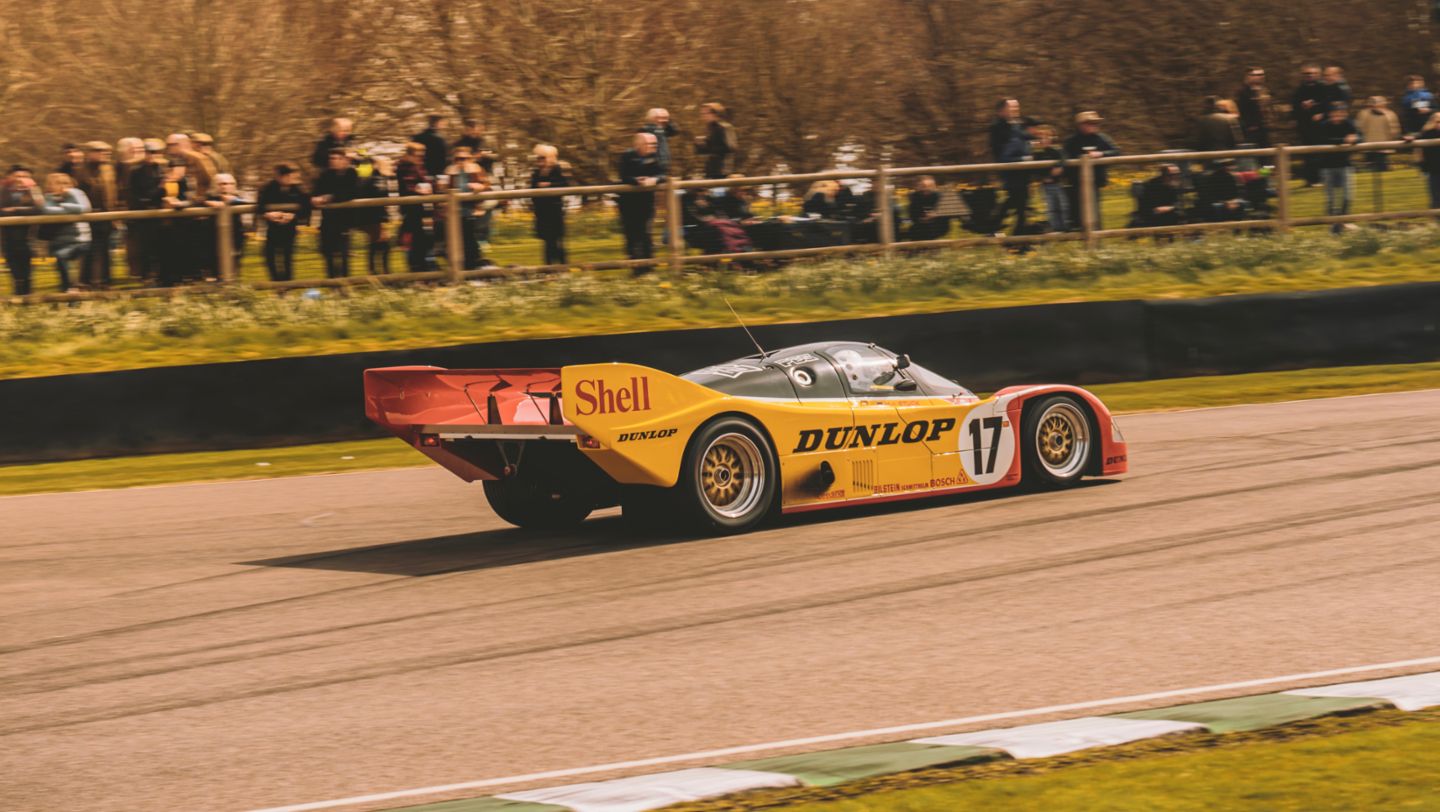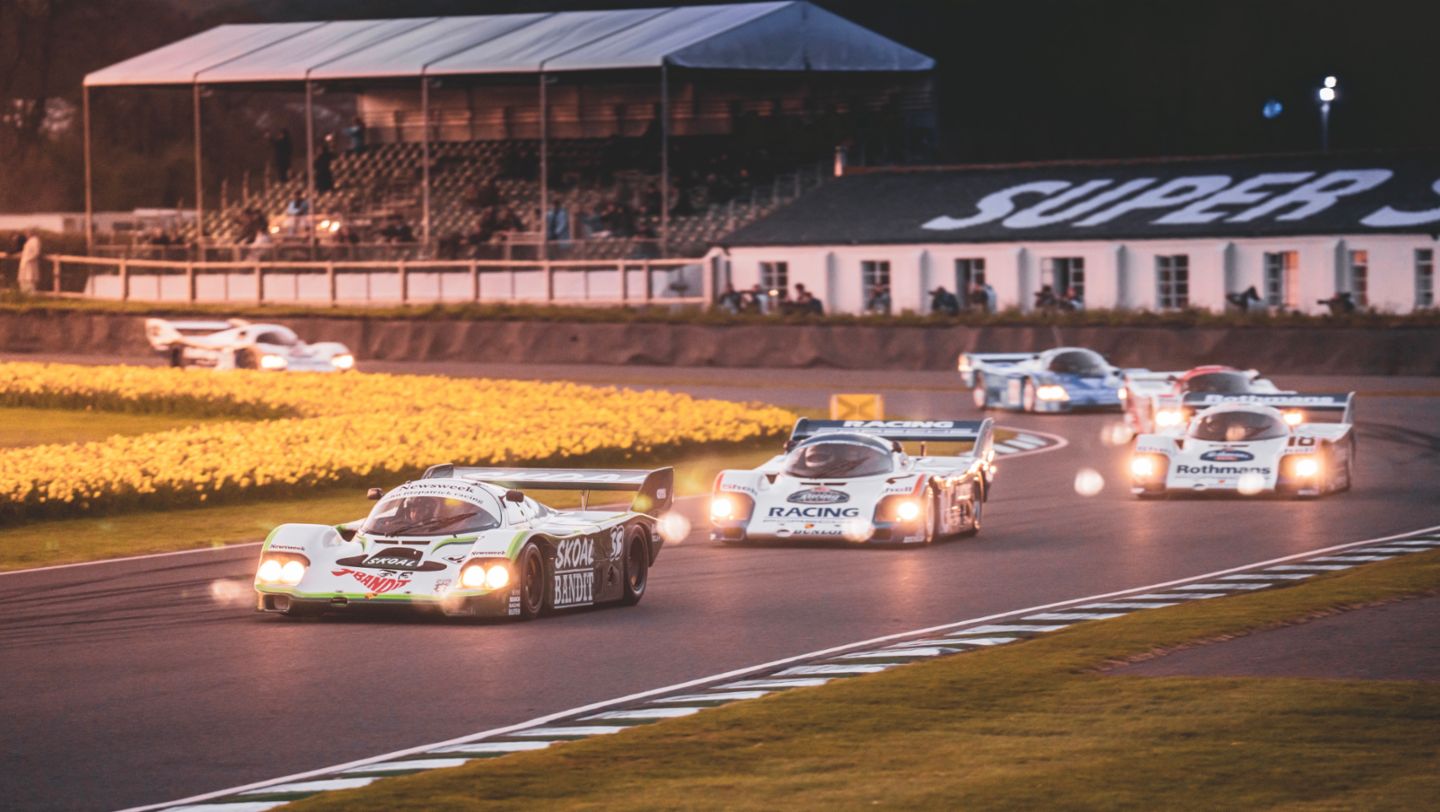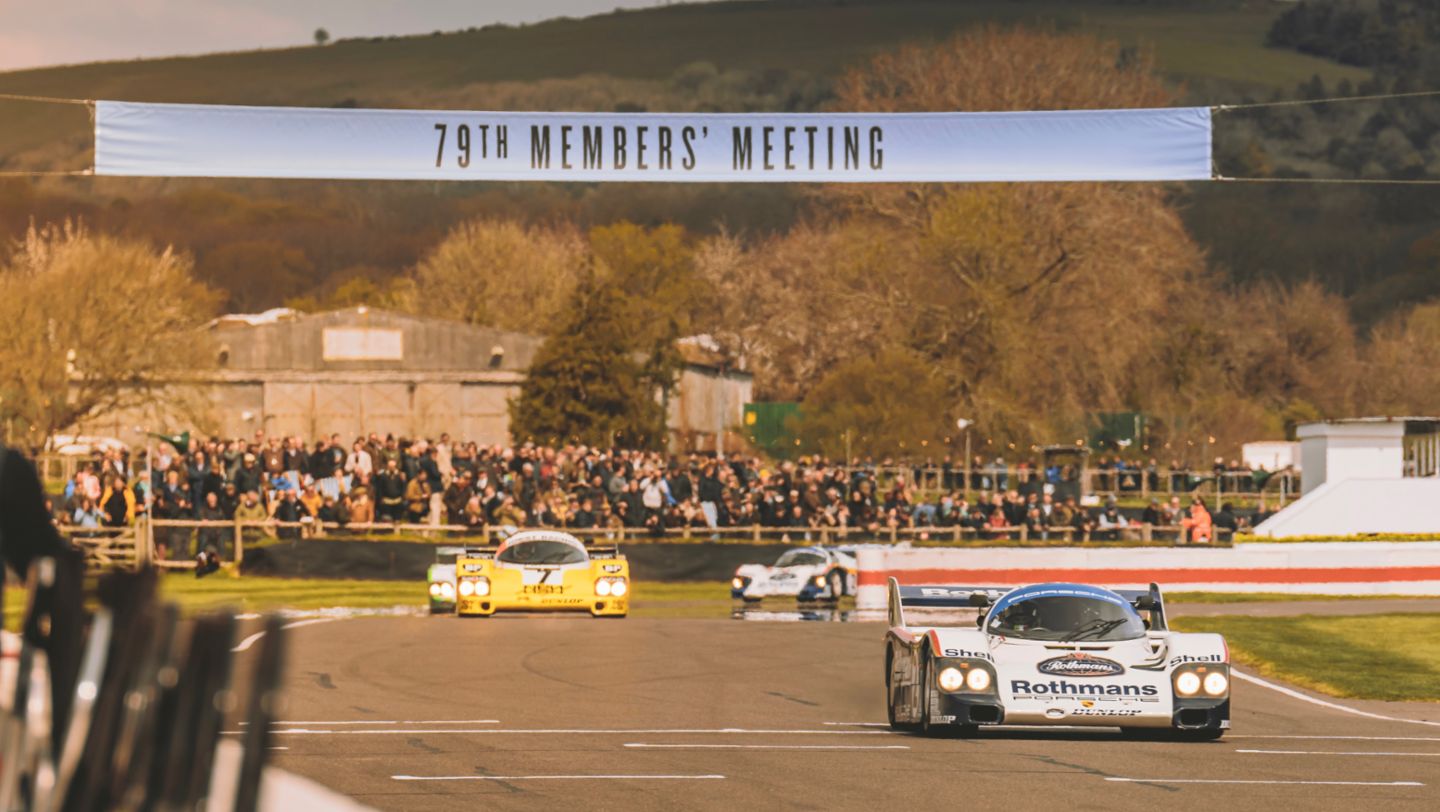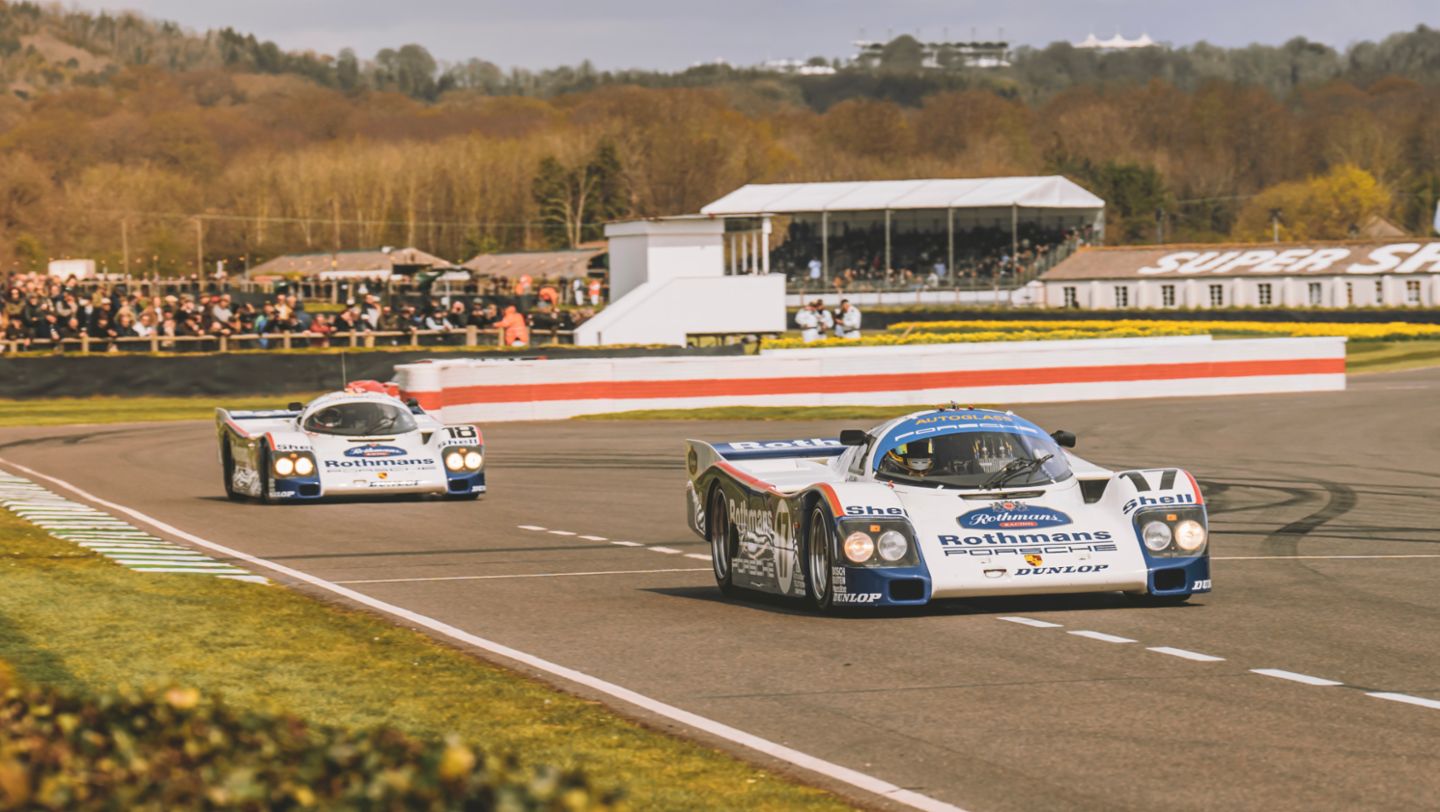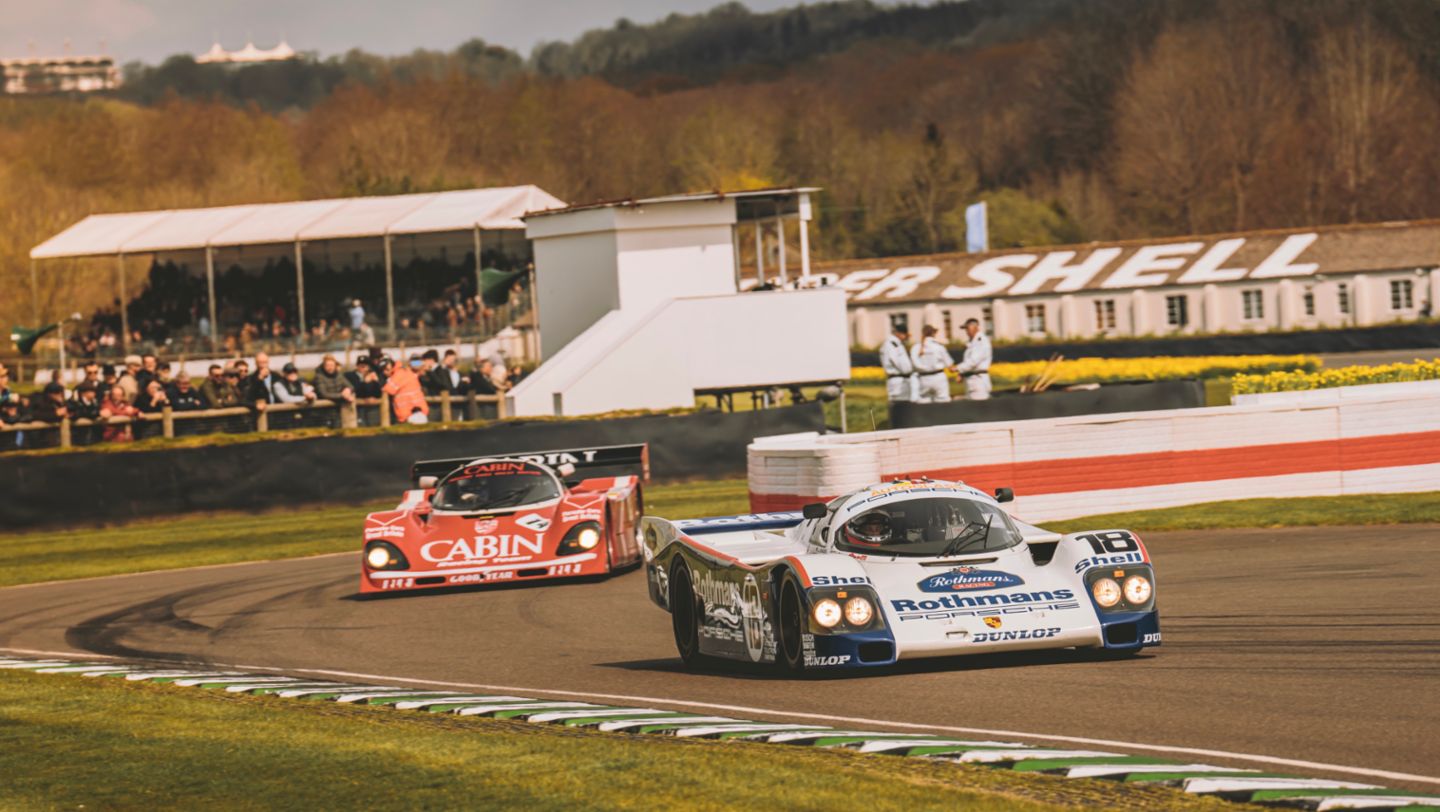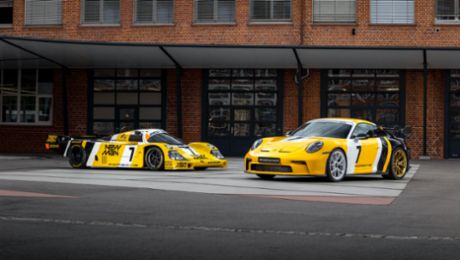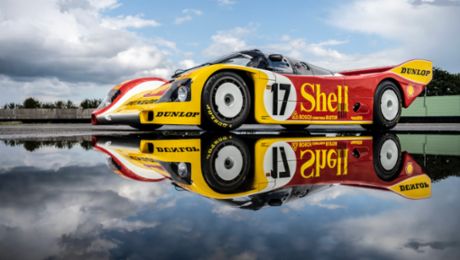In the early 1980s the world witnessed a revolution in sports car racing. The arrival of Group C ushered in an era where fuel efficiency was paramount and the aerodynamic advances of ground effect would revise the accepted norms of design and performance forevermore. At the vanguard of this brave new world was Porsche, which produced a world beater in the 956.
Fast forward 40 years and the legacy of Porsche’s Group C prototype remains unrivalled. At Goodwood Motor Circuit, on the south coast of England, some 21 examples spanning a scarcely credible 12 years of international competition assembled at the weekend, underlining the scale and scope of this car’s extraordinary dominance as both a factory and customer racer.
Of the cars that made it to Goodwood, 16 were taking part in a high-speed demonstration run, the largest number of works and privateer 956 and later 962 models to have been driven together in history. It promised to be a unique and unforgettable spectacle, overloading the senses with vivid liveries, evocative smells and the incomparable, unmistakable sound of Porsche’s turbocharged flat-six.
As the cars lined up in the half light of a dusky April evening, forming the traditional pattern of a Le Mans start, headlights came on at intervals, parallel beams of white and yellow cutting across Goodwood’s paddock straight. The pit lane cleared and a hush of anticipation descended on the packed grandstands. It was easy to forget the intervening 40 years of Porsche’s engineering development and racing success; the very best of Group C had, for one very special weekend, returned in all its glory.
Porsche’s Le Mans-winning 956 and 962 in their famous Rothmans liveries were joined on the start line by the recently restored 962 C that took Hans-Joachim Stuck to a decisive victory in the ADAC Supercup in 1987. Alongside them were a panoply of privately owned ex-works and customer examples, from the bright red Richard Lloyd Racing Cabin 962 to the Italya Sports sister car with its unmissable pink bodywork. No less striking was the yellow and black New-Man Joest Racing 956 that won Le Mans in 1985, nor the bright green Skoal Bandit 956B, the Motronic engine management of which helped Derek Bell to the world driver’s title in 1986.
One by one the cars barked into life. Revs built and exhausts roared as the engines warmed through, the sound ricocheting off the pit walls and deep into the English countryside. Cockpits closed, the grid emptied and three-deep rows of spectators lined the perimeter, packing the grandstands and holding their collective breath. As the flag dropped and the engines screamed simultaneously towards their 8,000 rpm redlines, the crowd appeared to reel back in a united awe. The first of Porsche’s works cars led a field that weaved and slid onto the straight, spearing in close formation towards the first corner and turning out of sight.
For the 20 minutes that followed, a tightly packed group of what for many remains the greatest single racing car of all time, lapped the 3.8-kilometre circuit at near-race pace, wastegates chattering and engines hitting shrill peaks as their drivers explored the limits of power and braking, wrestling with unassisted steering, heavyweight clutches and physical manual transmissions.
The pink sky above the circuit deepened and the cars’ lights pierced the encroaching darkness, side by side through the challenging sections of Fordwater and St Mary’s, slipstreaming down the Lavant Straight before braking hard into Woodcote and the tight chicane that precedes the start line. For a fleeting moment, Goodwood could have been Le Mans, Daytona or Sebring – these very same cars battling tooth and nail for the most coveted titles in endurance racing. But all too soon the drive was over, the most astonishing of sights consigned to memory as the cars pulled into the empty paddocks and fell silent once again.
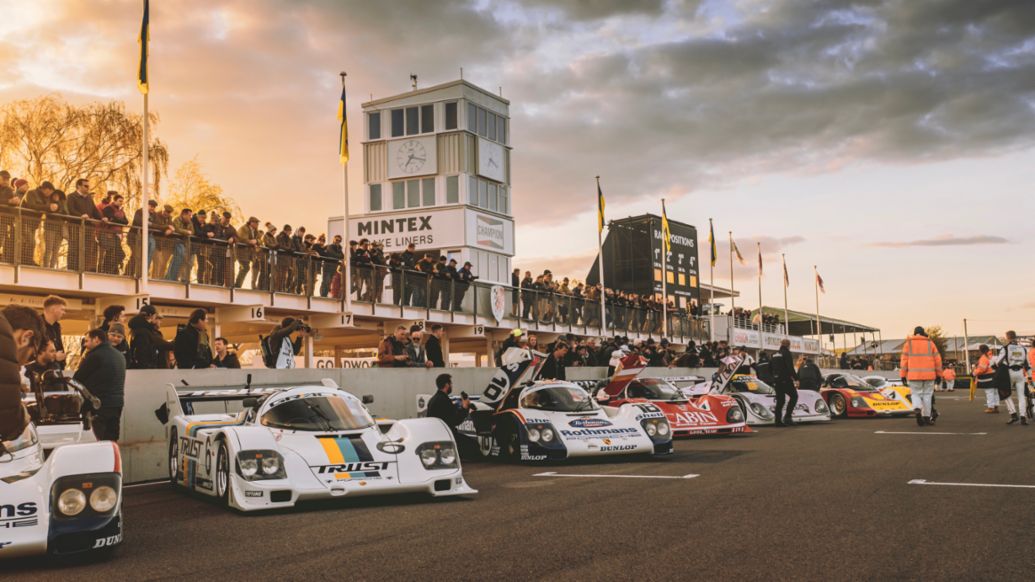
For drivers and spectators alike, it was a privilege to witness this incredible spectacle – a celebration but also a powerful evocation of an unrepeatable era in sports car racing. Following its historic 1-2-3 victory at Le Mans in 1982, the 956 and 962 would take Porsche to five further consecutive wins at the 24 Hours alongside three back-to-back Driver’s and Manufacturer’s Championship titles in the World Endurance Championship. In 1983, the 956 in both works and customer guise took an incredible nine out of the first 10 places at Le Mans. This was also the year in which Stefan Bellof set the long-standing lap record around the Nürburgring’s Nordschleife during qualifying for the 1,000 km race: the remarkable combination of Norbert Singer’s ground effect car and Hans Mezger’s potent turbocharged Boxer engine uniting to clock a time of six minutes 11 seconds, still the fastest single lap for a series racing car around the famously dangerous circuit.
The pre-eminence of the 956 and 962 was not only demonstrated by its early success, but by the steady stream of silverware it would go on accumulating around the world for years to come, winning its last race in the IMSA GTP Championship at Road America in 1993 and taking a final Le Mans victory as a re-classified road car in 1994. Its appearance at Goodwood, 40 years on from that incredible debut year, served as a welcome reminder of an unparalleled epoch for Porsche and a golden age for sports car racing as a whole.

